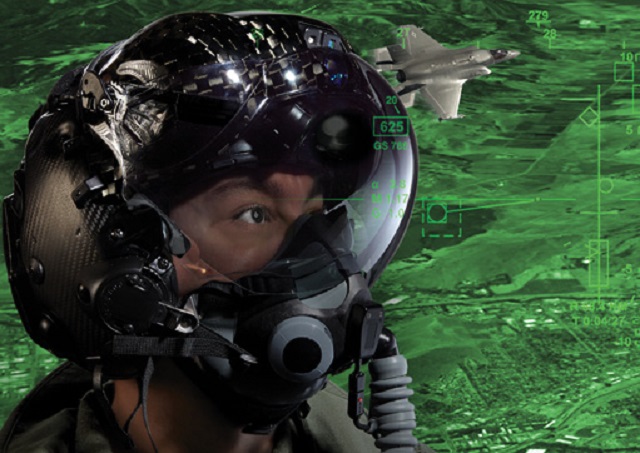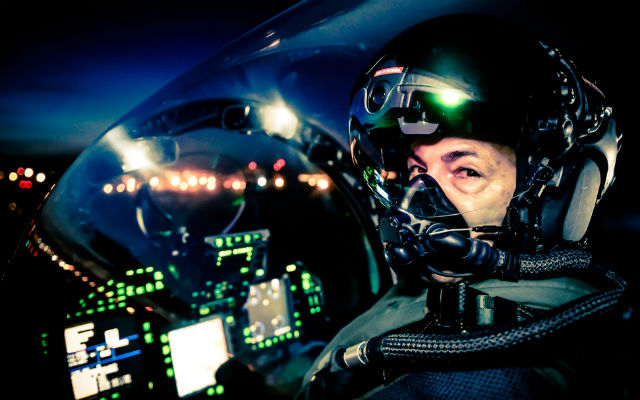The crown jewel in the Lockheed Martin F-35 weapon system, the “Gen 3” F-35 Helmet Mounted Display System, has been delivered after more than a decade of development and will start being cut into the production line next year.
Produced by Rockwell Collins and Elbit Systems’ Vision Systems joint venture, the Gen 3 helmet has had a troubled past and is almost as controversial as the fifth-generation fighter aircraft itself, but will soon be ready for service with the first unit delivered this week.
Rockwell announced the helmet delivery in an August 12 statement, saying it will be introduced into the fleet as part of F-35 low-rate initial production Lot 7 in 2016.
It succeeds the less-capable Gen 2 helmet that the US Marine Corps used to declare initial operational capability last month, and has been delivered as was promised in 2013 when the Pentagon cancelled an alternative helmet programme with BAE Systems.

The F-35's Gen 3 helmet is produced by Rockwell Collins ESA Vision Systems
Rockwell Collins
The high-technology product allows the F-35 to operate without a traditional head-up display, helmet-mounted display or night vision goggles by combining the three systems into a single unit.
The Gen 3 helmet feeds flight information and sensor data to the pilot throughout the flight, and when combined with Northrop Grumman’s F-35 distributed aperture system and six infrared cameras, the pilot can see through the airframe virtually for 360° situational awareness.
“All the information that pilots need to complete their missions – through all weather, day or night – is projected on the helmet’s visor,” Rockwell says. Gen 2 is essentially a scaled down version that allows current F-35 operators to perform day and night missions and cue weapons and sensors.
The rollout of Gen 3 was delayed several years because of technical problem like jittery data displays and poor resolution. The US Defense Department launched the alternative programme with BAE Systems in 2011, but aborted the programme two years later amid budget cuts and new-found confidence in the original helmet.
Despite the setback, BAE Systems incorporated the technology into the Strike helmet system employed on the Eurofighter Typhoon and Saab Gripen to create “Striker II,” which the company now markets as a platform-agnostic alternative to the Rockwell-Elbit Gen 3 system.

BAE Systems' Striker II helmet-mounted display system is derived from the technology developed in the alternative F-35 helmet programme
BAE Systems
Source: FlightGlobal.com























